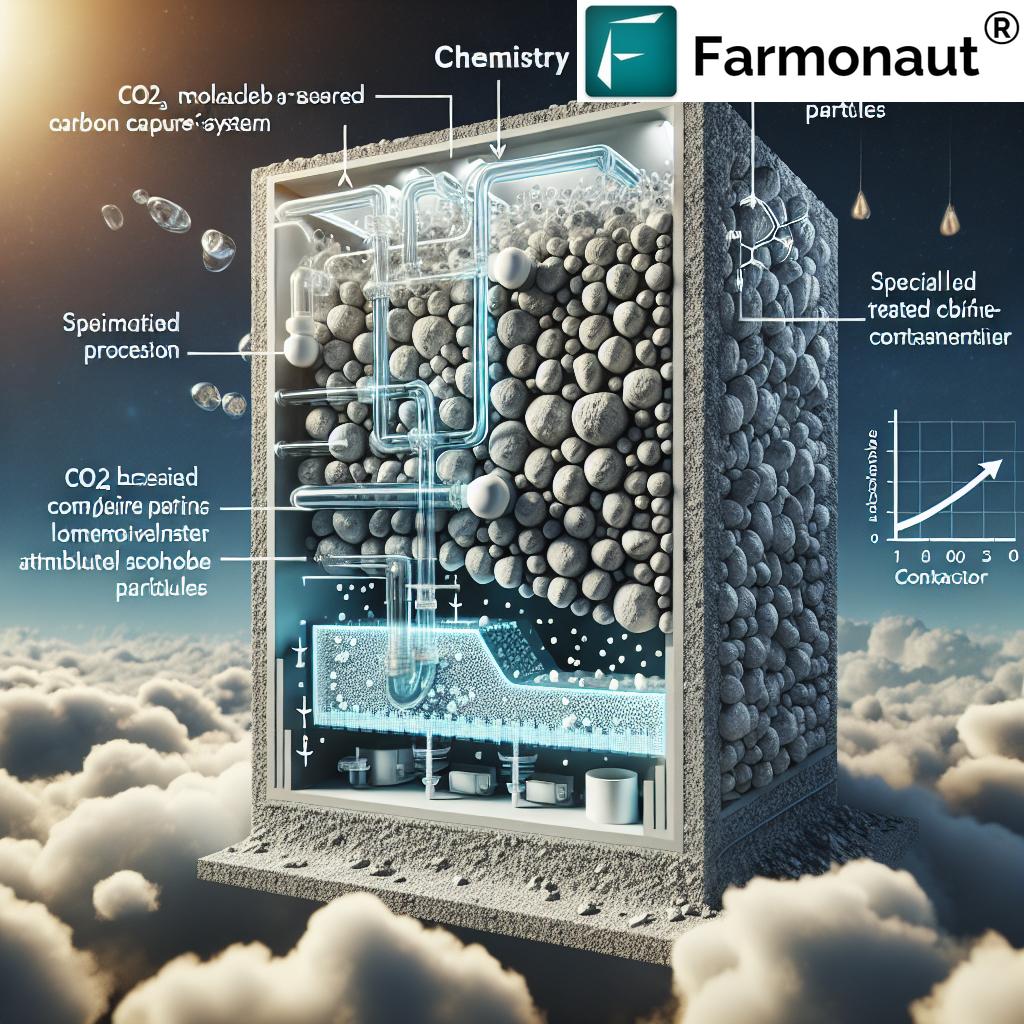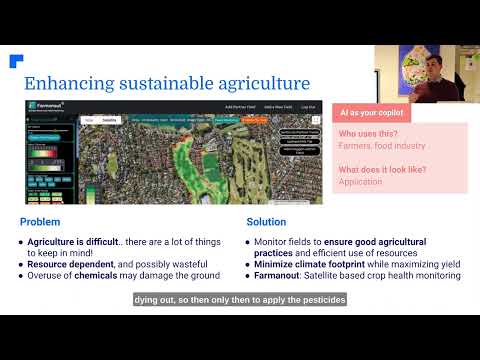Revolutionizing Climate Change Mitigation: Innovative Direct Air Capture Technology Scales Up in North Dakota
“A $13 million investment is accelerating the growth of disruptive carbon removal projects worldwide.”
In the face of escalating global climate challenges, we are witnessing a revolutionary leap forward in climate change mitigation efforts. The dawn of innovative direct air capture technology and carbon dioxide removal methods is reshaping our approach to combating greenhouse gas emissions. As we delve into this groundbreaking field, we’ll explore how a limestone-based carbon capture method is setting new standards for efficiency and scalability in atmospheric CO2 absorption.
At the forefront of this climate tech revolution is a UK-based company that has recently secured a significant funding boost to scale up its operations in North Dakota. This development not only marks a milestone in the company’s growth but also signifies a major step forward in the global fight against climate change.
The Power of Limestone: Nature’s Carbon Capture Solution
Central to this innovative approach is the use of limestone, an abundant natural resource with inherent chemical properties that make it ideal for carbon capture. By harnessing the natural chemistry of this rock, scientists have developed a passive yet highly effective method for pulling CO2 directly from the air.
Here’s how the process works:
- Limestone acts as a natural sponge, efficiently absorbing CO2 from the atmosphere
- Through a carefully engineered process, the carbon is separated from the limestone
- The captured carbon is then safely stored underground
- As a byproduct, lime is produced, which has various industrial applications
This method stands out for its simplicity and effectiveness, offering a scalable solution for atmospheric carbon dioxide removal that could potentially be implemented worldwide.

Scaling Up: The North Dakota Project
The recent $13 million Series A funding, led by Barclays Climate Ventures and supported by Shell Ventures and others, is set to catalyze the growth of this promising technology. A key focus of this investment is the development of a new facility in North Dakota, designed to capture 1,000 tonnes of CO2 annually.
This project represents a significant scaling up of direct air capture (DAC) technology, demonstrating its potential for commercial viability. By leveraging proprietary technology, the company aims to create a flexible and scalable carbon capture solution that can be adapted to various environments and needs.
The Pelican Gulf Coast Carbon Removal DAC Project
In an exciting development, a partnership with Shell and Mitsubishi is giving rise to the Pelican Gulf Coast Carbon Removal DAC project. This ambitious initiative aims to capture an impressive 50,000 tonnes of carbon each year, far surpassing the capacity of any existing DAC facility in the United States.
The scale of this project underscores the growing confidence in DAC technology as a viable solution for large-scale carbon removal. It also highlights the potential for generating significant carbon removal credits, with estimates suggesting values approaching $3 million.
Economic Implications and Carbon Removal Credits
The development of efficient and scalable DAC technology is not just an environmental victory; it also opens up new economic opportunities. The generation of carbon removal credits represents a burgeoning market that could drive further investment in climate tech solutions.
For businesses looking to offset their carbon footprint, these credits offer a tangible way to contribute to climate change mitigation efforts. As the market for carbon credits matures, we can expect to see increased demand for effective carbon removal technologies, further driving innovation in this space.
Challenges and Opportunities in Direct Air Capture
While the potential of DAC technology is immense, it’s important to acknowledge the challenges that lie ahead. Scaling up these solutions to make a significant impact on global CO2 levels requires overcoming several hurdles:
- Energy requirements: DAC processes can be energy-intensive, necessitating the development of more efficient methods
- Cost reduction: Bringing down the cost per tonne of CO2 captured is crucial for widespread adoption
- Infrastructure development: Creating the necessary facilities and storage solutions at scale is a significant undertaking
- Regulatory frameworks: Establishing supportive policies and regulations to incentivize carbon removal
However, these challenges also present opportunities for innovation and growth in the climate tech sector. As we continue to refine and improve DAC technologies, we can expect to see new solutions emerge that address these issues head-on.
“Limestone-based direct air capture technology efficiently absorbs atmospheric CO2, offering scalable solutions for global emission reduction.”
The Role of Technology in Climate Change Mitigation
The advancement of DAC technology exemplifies the crucial role that innovation plays in addressing global challenges. By combining natural processes with cutting-edge engineering, we’re developing solutions that have the potential to make a real difference in the fight against climate change.
As we explore these new frontiers in carbon capture, it’s worth considering how other technological innovations are contributing to climate change mitigation efforts. For instance, in the agricultural sector, companies like Farmonaut are leveraging satellite technology and AI to promote sustainable farming practices.
While Farmonaut’s focus is on precision agriculture rather than direct carbon capture, their approach demonstrates how technology can be applied to reduce environmental impact across various industries. By providing farmers with tools to optimize resource use and monitor crop health, Farmonaut contributes to more sustainable agricultural practices, indirectly supporting climate change mitigation efforts.
Comparing Direct Air Capture Technologies
To better understand the landscape of carbon removal solutions, let’s take a look at how different DAC technologies compare:
| Technology | CO2 Capture Method | Estimated Capture Capacity (tons CO2/year) | Energy Requirements (kWh/ton CO2) | Estimated Cost ($/ton CO2 removed) | Storage Method | Scalability Potential | Current Deployment Status |
|---|---|---|---|---|---|---|---|
| Limestone-based DAC | Natural absorption using limestone | 1,000 – 50,000 | 1,500 – 2,000 | 100 – 200 | Underground geological storage | High | Pilot projects underway |
| Amine-based DAC | Chemical absorption using liquid amines | 500 – 1,000,000 | 2,000 – 2,500 | 200 – 600 | Compressed and stored underground | Medium | Commercial plants operating |
| Solid Sorbent DAC | Adsorption using solid materials | 1,000 – 100,000 | 1,800 – 2,200 | 150 – 300 | Compressed and stored underground | Medium | Demonstration projects |
| Moisture Swing DAC | Humidity-driven CO2 absorption | 100 – 10,000 | 1,000 – 1,500 | 50 – 150 | Various options, including mineralization | Medium | Early-stage research |
This comparison illustrates the diversity of approaches in the DAC field, each with its own strengths and challenges. The limestone-based method we’ve focused on in this article stands out for its high scalability potential and relatively low energy requirements.
The Future of Carbon Removal: Scaling Up and Driving Innovation
As we look to the future, the potential for scaling up DAC technology is immense. With continued investment and research, we can expect to see:
- Improved efficiency in carbon capture processes
- Reduced costs, making DAC more economically viable
- Integration with renewable energy sources to minimize the carbon footprint of DAC operations
- Development of new applications for captured CO2, creating additional economic incentives
The growth of the DAC industry also presents opportunities for job creation and economic development, particularly in regions where these facilities are being built. As we transition to a low-carbon economy, industries centered around carbon removal and utilization could become significant drivers of economic growth.
Integrating DAC with Other Climate Solutions
While Direct Air Capture technology shows great promise, it’s important to view it as part of a broader portfolio of climate solutions. Effective climate change mitigation will require a multi-faceted approach, combining:
- Renewable energy adoption
- Energy efficiency improvements
- Sustainable land use practices
- Circular economy principles
- Behavior change and public awareness
By integrating DAC with these other strategies, we can create a more comprehensive and effective approach to reducing atmospheric CO2 levels.
The Role of Policy and International Cooperation
Advancing DAC technology and other climate solutions will require supportive policy frameworks and international cooperation. Key areas for policy development include:
- Incentives for carbon removal and storage
- Standardization of carbon accounting methods
- Research and development funding for climate technologies
- International agreements on carbon pricing and trading
As nations work together to address the global challenge of climate change, technologies like DAC can play a crucial role in achieving ambitious emissions reduction targets.
Investing in a Sustainable Future
For those interested in sustainable climate tech investments, the growing field of carbon removal technologies presents exciting opportunities. As the market for carbon credits expands and the demand for effective climate solutions increases, companies developing innovative DAC technologies are likely to see significant growth.
However, it’s important for investors to conduct thorough due diligence, considering factors such as:
- Technological readiness and scalability
- Cost-effectiveness of carbon removal
- Potential for integration with existing industries
- Regulatory environment and policy support
By carefully evaluating these factors, investors can contribute to the advancement of crucial climate technologies while potentially realizing significant returns.

Conclusion: A New Era in Climate Change Mitigation
As we’ve explored in this article, the development and scaling up of innovative Direct Air Capture technologies, particularly the limestone-based method, represents a significant leap forward in our efforts to combat climate change. The recent $13 million investment in scaling up operations in North Dakota marks a crucial step towards making these solutions commercially viable and impactful on a global scale.
While challenges remain, the potential of DAC technology to contribute to meaningful carbon dioxide removal is immense. By continuing to invest in research, development, and scaling of these technologies, we can create powerful tools in our arsenal against climate change.
As we look to the future, it’s clear that addressing climate change will require a multifaceted approach, combining technological innovation with policy support and changes in individual and corporate behavior. Direct Air Capture technology, with its ability to directly remove CO2 from the atmosphere, will play a crucial role in this effort, complementing other strategies such as renewable energy adoption and sustainable land use practices.
The journey towards a sustainable, low-carbon future is complex, but with continued innovation and commitment, we are making significant strides. The limestone-based DAC technology and its successful implementation in North Dakota serve as a beacon of hope, demonstrating that with ingenuity and determination, we can develop effective solutions to even the most daunting global challenges.
FAQs
- What is Direct Air Capture (DAC) technology?
Direct Air Capture is a process that removes carbon dioxide directly from the air using chemical reactions. It’s designed to mitigate climate change by reducing atmospheric CO2 levels. - How does limestone-based DAC work?
Limestone-based DAC leverages the natural chemistry of limestone to absorb CO2 from the air. The process separates the carbon from the limestone and stores it safely underground, producing lime as a byproduct. - What are the advantages of using limestone for carbon capture?
Limestone is an abundant, naturally occurring material that efficiently absorbs CO2. The process is passive and highly scalable, making it a promising solution for large-scale carbon removal. - How much CO2 can the North Dakota facility capture?
The new facility in North Dakota is designed to capture 1,000 tonnes of CO2 annually. - What are carbon removal credits?
Carbon removal credits are financial instruments that represent a certain amount of CO2 removed from the atmosphere. They can be bought by companies or individuals to offset their carbon emissions. - How does DAC compare to other carbon capture methods?
DAC can remove CO2 directly from the atmosphere, unlike point-source capture methods that focus on emissions from specific industrial processes. This makes DAC particularly useful for addressing historical emissions and hard-to-abate sectors. - What are the main challenges facing DAC technology?
Key challenges include high energy requirements, the need for cost reduction, scaling up infrastructure, and developing supportive regulatory frameworks. - How can DAC contribute to climate change mitigation?
By directly removing CO2 from the atmosphere, DAC can help reduce overall greenhouse gas levels, complementing efforts to reduce emissions from various sources. - What role does policy play in advancing DAC technology?
Supportive policies can provide incentives for carbon removal, fund research and development, and create markets for carbon credits, all of which are crucial for the advancement and adoption of DAC technology. - How can individuals or companies support the development of DAC technology?
Individuals and companies can support DAC development through investments in climate tech companies, purchasing carbon removal credits, and advocating for policies that support carbon removal technologies.
Earn With Farmonaut: Earn 20% recurring commission with Farmonaut’s affiliate program by sharing your promo code and helping farmers save 10%. Onboard 10 Elite farmers monthly to earn a minimum of $148,000 annually—start now and grow your income!
Learn More About Farmonaut’s Affiliate Program
Farmonaut Subscriptions
As we continue to explore and develop innovative solutions to combat climate change, it’s clear that technologies like Direct Air Capture will play a crucial role in shaping a sustainable future. By combining these cutting-edge approaches with other environmentally conscious practices across various sectors, we can work towards a cleaner, greener planet for generations to come.






